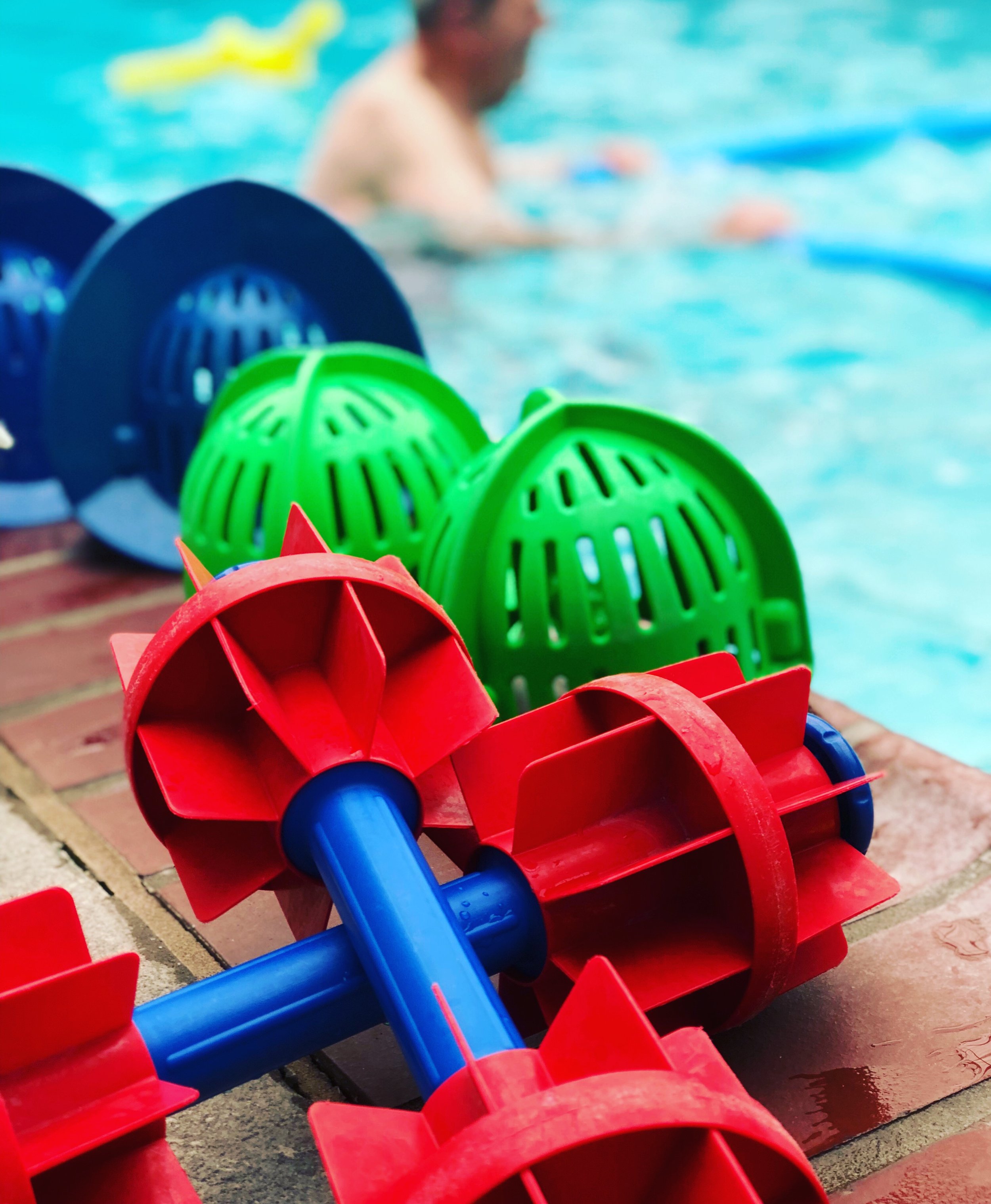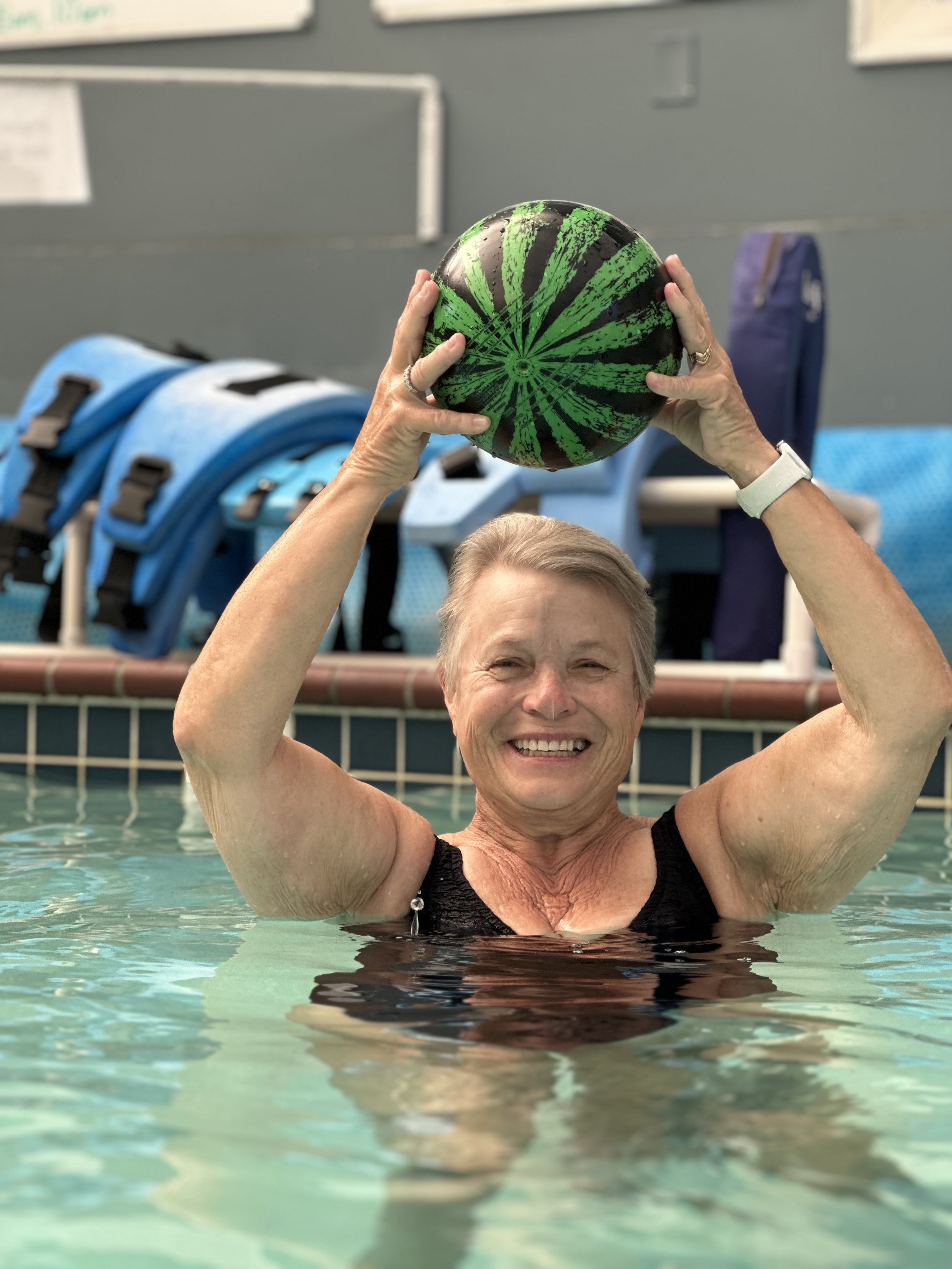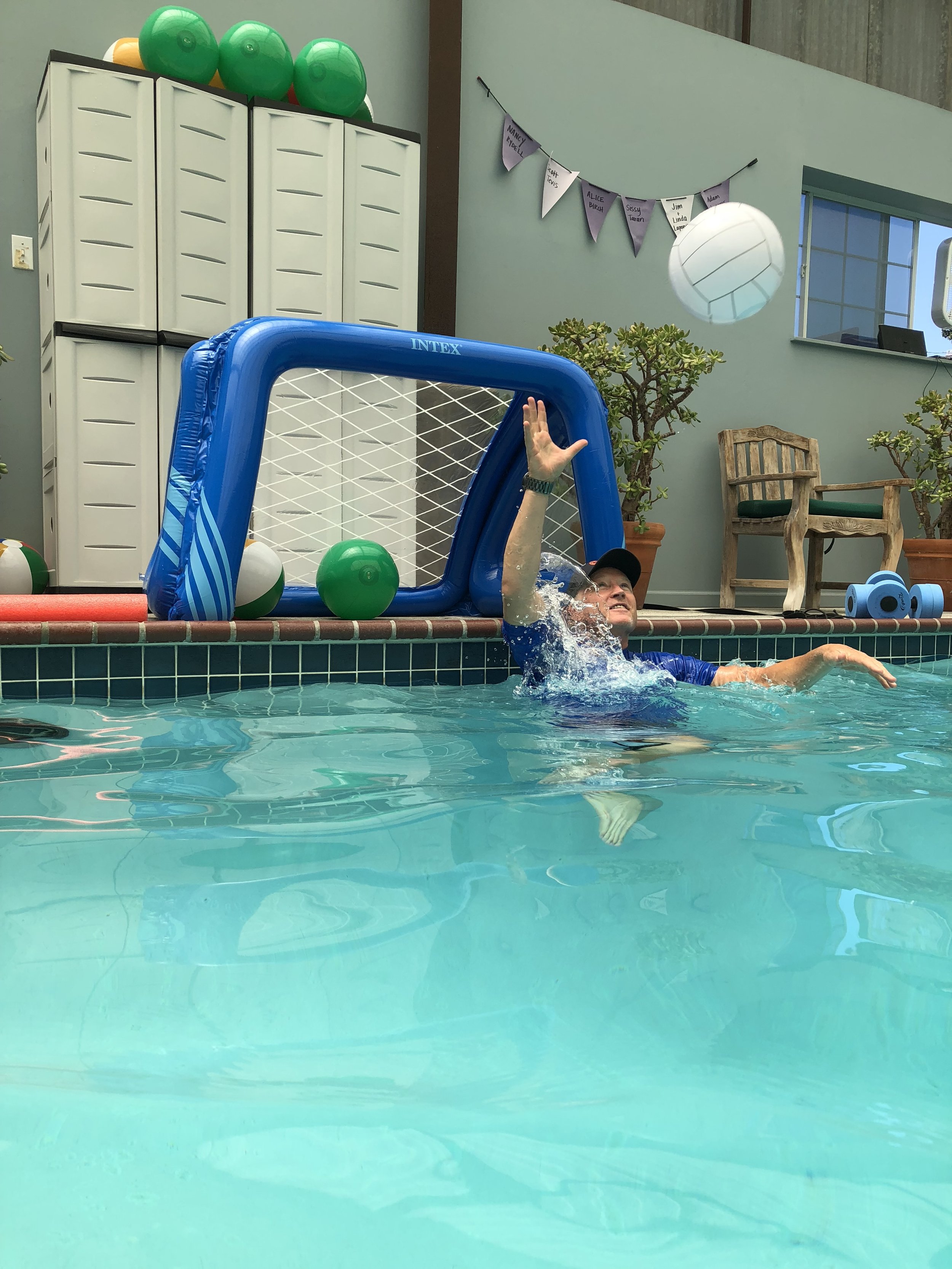Osteoporosis & The Pool: Building Bone Strength in the Water
We’re kicking off the “Power of the Pool” blog by answering a frequently asked question & clearing up a common misconception:
I heard that weightbearing exercise is necessary for building bone mass, so water exercise won’t help my osteoporosis… is that true?
Osteoporosis is often described as a “silent disease” defined by low bone density, decreased bone strength, and a change in bone structure, sometimes resulting in fractures, pain, and decreased quality of life. Bones are living tissue and constantly remodeling via osteoblasts (bone-building cells) and osteoclasts (bone-destroying cells!). Too little bone-building, too much destroying, or a combination of the two is what can lead to osteoporosis. The American Physical Therapy Association’s “PT Guide to Osteoporosis” offers more about the physiology of the disease, risk factors, and treatment recommendations if you’re interested in learning more.
Plenty of research has demonstrated that impact exercises like jogging, hiking, dancing, climbing stairs, and playing pickleball may increase bone mineral density. Additionally, combining aerobic exercise with resistance training significantly reduces bone loss. The good news for our mermaids and mermen: recent research has also shown that aquatic exercise can prevent the reduction in bone mineral density that’s expected with age. (We lose 1% of our bone mass every year starting at the age of 40! Yikes!)
Let’s dive into the numbers:
In the US, 8 million women and 2 million men have osteoporosis. Additionally, 44 million people have been diagnosed with osteopenia (low bone density).
1 in 2 women over the age of 50 will sustain an osteoporotic fracture in their lifetime.
Every 3 seconds, someone in the world breaks a bone due to osteoporosis.
Risk of death following a vertebral fracture is 2.7x greater than without a fracture.
Fortunately, exercise can be beneficial in improving bone and muscle strength, reducing fall risk, and improving general well-being… and it’s never too late to start.
Strong muscles lead to strong bones. Your muscles are connected to your bones via tendons, and every time those tendons pull at their bony insertions, they stimulate your bone-building osteoblasts. While research has shown that weightbearing exercise can increase bone strength, science also shows that resistance training can be equally beneficial. And guess what? As long as the stimulus is sufficient, it doesn’t really matter WHERE you do your strength training, so let’s go make some waves!
Since there are plenty of resources to guide you in land-based exercise for bone health, we want to focus on the power of the pool and give you some ideas for your water workouts.
Start with your feet on the floor: that’s the dreaded shallow end for some of our clients! Shallow water exercise IS weightbearing exercise, and it’s so good for you. A general rule: in waist-deep water, you’re about 50% weightbearing, and in chest-deep water, you’re about 30% weightbearing. Another fun fact: increasing your speed (if you’re water walking or jogging) will increase weightbearing forces, too.
Start with some movement. Aerobic exercises like walking, marching, running, skiing, hopping, and lunging are great!
Add in some multi-joint exercises like squats, step ups, and step overs. To make these harder (and increase weightbearing!), try them on a 4” or 8” block, use the bottom stair, or add a resistance bungee.
Find some pool toys.
To increase muscle strength, you need an adequate stimulus. The exercise needs to be challenging, and you need to perform enough repetitions to achieve your desired results!
Water is 800x denser than air, and moving faster will create even more drag resistance.
Pool equipment is your new best friend… ankle fins, drag bells, paddles, noodle knots, resistance cords, bungees, and weighted balls will help you get even stronger!
Focus on upper back, core, and hip strengthening if you have concerns about osteoporosis or posture. Our favorite exercises: rows, isometric barbell press down, and plank variations using noodles or foam dumbbells.
Use the pool wall or step for upper body weightbearing.
Yup, osteoporosis can be found at the wrist, too (know anyone who’s fallen and broken a wrist?). Wall push-ups, pop ups (or push-downs, whatever you’re calling them), and dips & piked holds on the steps are our recommendations.
Work on your balance.
Want to prevent falls? The pool is probably the safest place to work on your balance. We’re devoting next week’s blog ENTIRELY to balance, so be sure to check in again for more tips and tricks.
Strap on a belt & head to the deep end.
Sure, there’s no impact when you’re in deep water, but if you need to do your resistance training (or aerobic exercise) in deep water, go for it!
The same concepts apply: move quickly, use pool equipment for added resistance, and use the pool wall. Why do you think we love wall squats so much? Hello, impact!
Our favorite deep water exercises for core/hip/back strengthening: prone (on your stomach) flutter kicks, slap kicks, and skaters; cross country ski variations (and intervals); overhead beach ball hits.
Of course, you can also leave it to the pros and sign up for a water fitness class or 1:1 personal training for more guidance. If your goal is to increase bone health, we recommend trying one of our shallow water specialty classes (Hard Core Balance, Aqua Yoga, and Aqua Hips & Knees are great for beginners; S’WET and Water Warriors offer a little more impact & cardiovascular benefits). If you have a history of fractures or a diagnosis of osteoporosis, you might want to set up a 1:1 pool session with Breanna to find out what water exercises you should avoid and how to make the most of your aquatic exercise program.
There you have it: aquatic exercise CAN be a valuable way to boost bone health without the risk associated with falling. While we do recognize that the research supports land-based impact exercise, the pool is perfect for resistance training and higher intensity work that might not feel so good on land. Your only caveat (for both water AND land exercise): make sure it’s hard enough. Grab some drag bells, strap on fins, move your squats to the step, and start moving faster!
Comments? We’d love to hear from you!
Content provided on this website is for informational and educational purposes only; it does not constitute providing medical advice or professional services. Always seek the advice of your physician regarding your health conditions and prior to initiating an exercise program.








